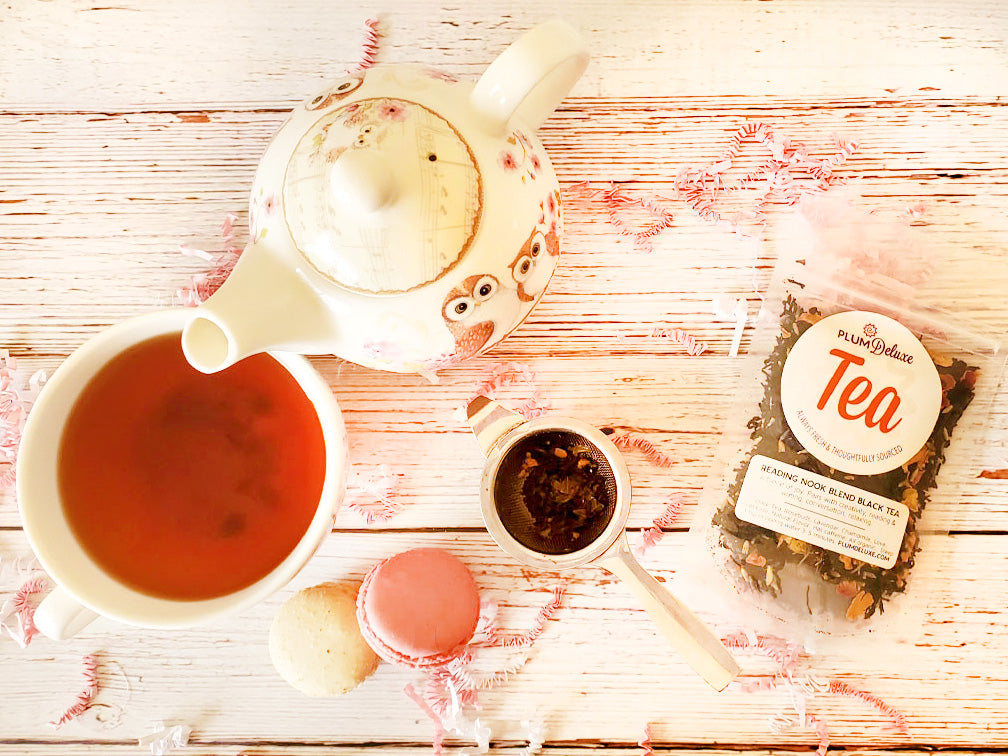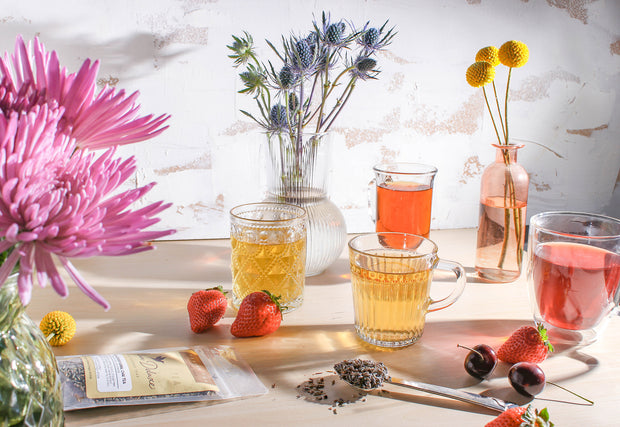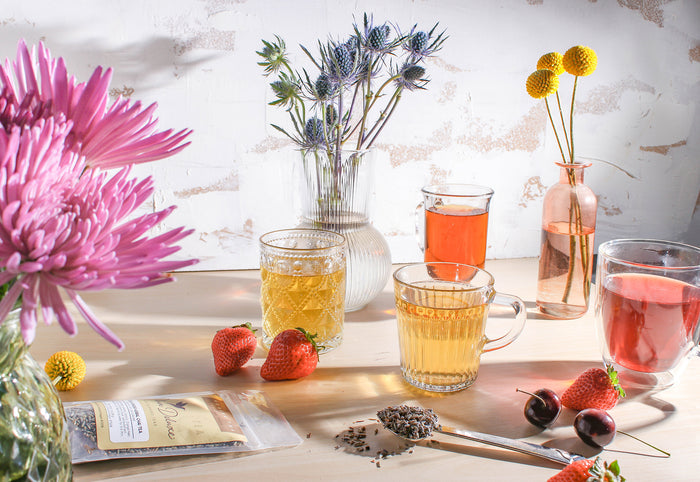Even if you can’t meet up in person, a tea party is just a Zoom call away. You can get creative and adapt some of our favorite tea party games for online use in addition to turning some of this trivia into a game.
Without further ado, here’s some tea trivia for your grownup tea party.

The Ancient Tea Horse Road
This 6th-Century trade route mostly ran through Yunnan, Sichuan, and Tibet. The people of the Yunnan and Sichuan provinces exchanged tea for horses with people in Tibet, giving the road its name.
This trade route stretched almost 1,400 miles (2,250 kilometers) and was one of the harshest trails in Asia. At the time, it took about three months and they had to traverse four deadly passes that stretched to 1,700 feet (520 meters) in height. This was all to exchange 130 pounds (60 kilograms) of tea for a single horse.
Tea or Coffee: Which Has More Caffeine?
While a cup of regular coffee does have more caffeine than a cup of tea, that’s only because coffee beans make a stronger brew. A pound of tea leaves, before they’re processed and brewed, actually contain more caffeine than a pound of coffee. It’s only the resulting brew that turns out to flip their caffeine contents.
Tea leaves contain 3.5 percent caffeine, while coffee beans contain between 1.1 and 2.2 percent. Part of the increase in caffeine in the resulting cup of coffee is due to hotter water and a more concentrated brew.
To get anywhere close to the amount of caffeine in a cup of coffee, you’d have to steep tea in incredibly hot water and for a long time – neither of which helps the taste of your favorite cuppa.
So pound-for-pound, tea leaves have more caffeine. But a brewed cup of tea typically only contains less than half of what’s in a cup of coffee.
What Comes First: Milk or Tea?
The tradition of pouring milk first had little to do with how it made the tea taste and more to do with class.
That is, you didn’t pour the tea first unless you owned a quality set of china that didn’t crack under the heat of boiled water. Milk was only poured first to prevent the cup from cracking, as cheaper materials didn’t hold up to such hot water.
In general, tea is poured first. It probably doesn’t matter too much if your tea is steeped in a pot, but if you’re steeping in a cup, adding milk first lowers your water temperature, resulting in a weak brew.

All Tea Comes from the Same Plant
All tea comes from the Camellia Sinensis plant. The drastic variations in flavor, mouthfeel, and other qualities have to do with the region where the tea is grown as well as they way the tea is processed.
For example, Darjeeling, the “champagne of teas,” comes from the same plant as countless other types of tea. Its trademark qualities have to do with where it’s grown: a small region at the foot of the Himalayas that offers near-perfect growing conditions.
Things like rooibos, tisanes, and other infusions aren’t technically tea. We tend to refer to any blend, herbal or otherwise, as a tea just for simplicity’s sake. Whatever they may be called, it doesn’t make them taste any less amazing!
Curious about how tea is made? Learn more here.
The London Tea Auction
The London Tea Auction made London the center of international tea trade and lasted an entire 300 years.
Tea was sold “by the candle,” which refers to the time limit set for the sale of each lot. A candle was lit at the beginning of the sale and once an inch of the candle had burned, the sale was closed.
According to the writing of an anonymous tea dealer: “To the uninitiated, a Tea sale appears to be a mere arena in which the comparative strength of the lungs of a portion of his Majesty´s subjects are to be tried. No one could for an instant suspect the real nature of the business for which the assemblage was congregated.”
This recording, taken in October 1936, shows that things seemed to have calmed down considerably!

History of the Tea Bag
While there’s some debate on how and when the first teabags came around, this was an invention that still sees incredible use today. While loose leaf tea has been regaining popularity, teabags are still the most popular way to enjoy a cup of tea in the United States.
Thomas Sullivan is typically credited with the popularity of the teabag, as he shipped out samples of his product in silk pouches in 1908. However, in 1901, Roberta Lawson and Mary Molaren filed for a patent for a tea leaf holder. The images look much like the teabags we use today; whereas Sullivan’s teabags used silk, this patent showed a design using stitched mesh fabric. (Though, Sullivan probably didn’t intend for his customers to dunk the silk tea bags in a cup of hot water. Once things caught on, he later switched to gauze for optimal infusing.)
Red Tea Doesn’t Always Refer to Rooibos
While many places refer to rooibos, the African red bush tea, as "red tea," that terminology isn’t always used in other parts of the world.
In China and other parts of Asia, tea is classified not by the color of the leaves but by the color of the brew. So, most of what we know as black tea is referred to as red tea in China due to the deep, red color of its brew.
One of the most popular Chinese red teas is one that’s a bit slow to catch on in the west due to its unusual, smoky flavor: Zheng Shan Xiao Zhong, or Lapsang Souchong. This is a type of tea smoked with pine needles, with a taste not unlike Scotch.
Hopefully, you enjoyed this bit of trivia; we’d love to see how you use it at your next event! If you’re looking for more activities to share with friends and family, don’t forget to check out the rest of our tea party games.

![Spring Break Tea Variety Pack [6-Pack Variety of Flavors]](http://www.plumdeluxe.com/cdn/shop/files/spring-break-pack.jpg?v=1740682266&width=165)















